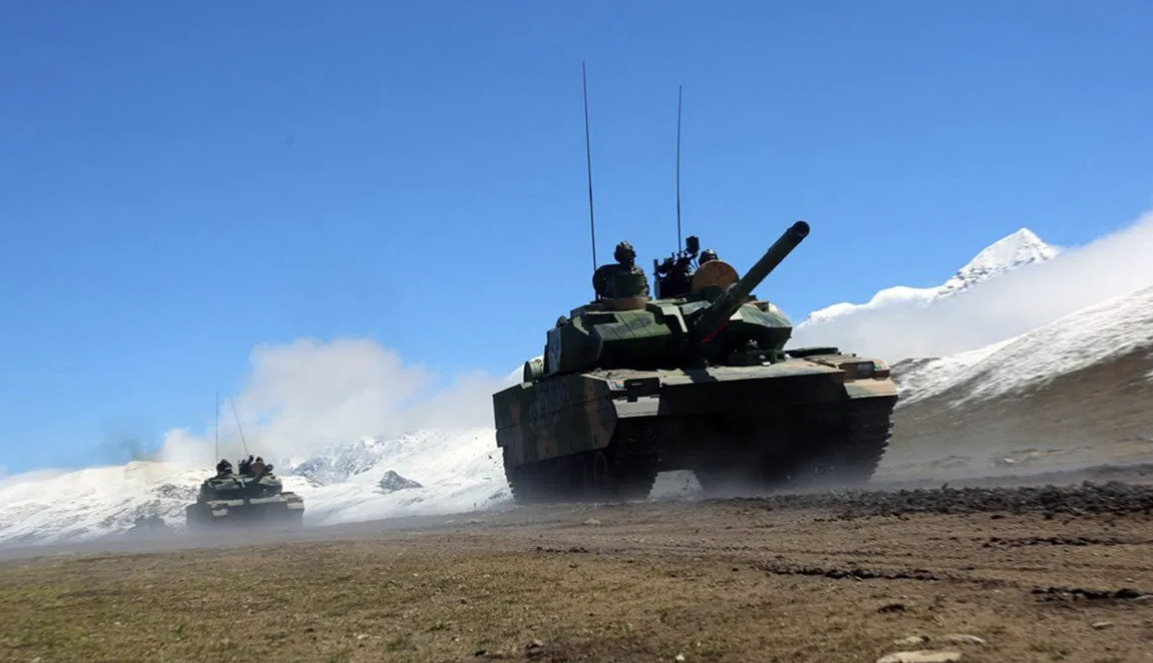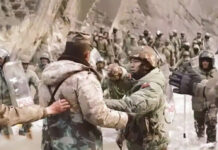
(TibetanReview.net, Oct12’21) – With India seeking the restoration of the status quo that prevailed before the current faceoff began and China unwilling to give up its new territorial gains, the 13th round of top-level military talks between the two sides held on occupied Tibet’s side of the Ladakh border ended in a bitter stalemate on Oct 10.
However, India said in its Oct 11 statement that the two sides agreed to maintain communications as well as stability on the ground. But China’s official media spoke of “risks of new conflict” while its army put tank regiments through their paces near the Indian border, according to China’s official globaltimes.cn and the scmp.com Oct 11.
New Delhi blamed Beijing for not being “agreeable to its constructive suggestions” as well as failing to provide any “forward-looking proposals” for defusing the 17-month military confrontation in eastern Ladakh, reported the timesofindia.com Oct 11.
The report noted that China’s Western Theatre Command Spokesperson Senior Colonel Long Shaohua went a step ahead by virtually threatening that “instead of misjudging the situation, the Indian side should cherish the hard-won situation in China-India border areas”.
What all this means is that the around 50,000 troops each have deployed on the frontier are headed for a second successive winter in eastern Ladakh, where temperatures dip to minus 30 degree Celsius along with acute oxygen deprivation.
The report cited sources as saying the almost nine-hour meeting on Oct 10, led by India’s 14 Corps commander Lt-General P G K Menon and China’s South Xinjiang Military District chief of staff Major General Zhao Zhidan, “failed to move even an inch” towards completing the stalled troop disengagement at Patrolling Point-15 (PP-15) in the Hot Springs-Gogra-Kongka La area.
“Consequently, the much bigger problems at Charding Ninglung Nallah (CNN) track junction at Demchok and Depsang Plains simply seem insurmountable as of now. Incidentally, there was a new PLA Major General heading the delegation (earlier rounds were led by Major General Liu Lin, who is now a Lt-General) this time,” the report quoted a source as saying.
The failure of the talk also meant that the two sides issued separate, unusually strong statements on Oct 11 morning, unlike the joint ones in the past.
“The Indian side emphasised resolution of the remaining areas would facilitate progress in the bilateral relations. The Indian side, therefore, made constructive suggestions but the Chinese side was not agreeable and also could not provide any forward-looking proposals. The meeting thus did not result in resolution of the remaining areas,” the Indian statement said.
The Chinese side accused India of “persisting in its unreasonable and unrealistic demands, which added difficulties to the negotiations”.
The Chinese People’s Liberation Army (PLA) statement is seen as clearly conveying its unwillingness to go beyond the disengagement achieved in the Pangong Tso-Kailash Range region in February and at PP-17A near India’s crucial Gogra post in early August.
What is more, “Chinese experts have warned of the risks of a new conflict, saying that China should not only refuse to give in to India’s arrogant demands on the negotiation table, but also be prepared to defend against another Indian military aggression,” the globaltimes.cn report quoted Chinese experts as warning.
Besides, after the territorial talks between the two sides failed at the weekend, the Chinese army put tank regiments through their paces near the Indian border, said the scmp.com report, citing China’s state broadcaster CCTV.
The Xinjiang military district of the PLA, which faces Indian troops at an elevation of 5,000 metres (16,400 feet) in the Karakoram Mountains, had been actively improving its high-altitude tank battle capabilities, the CCTV broadcast was cited as saying.





